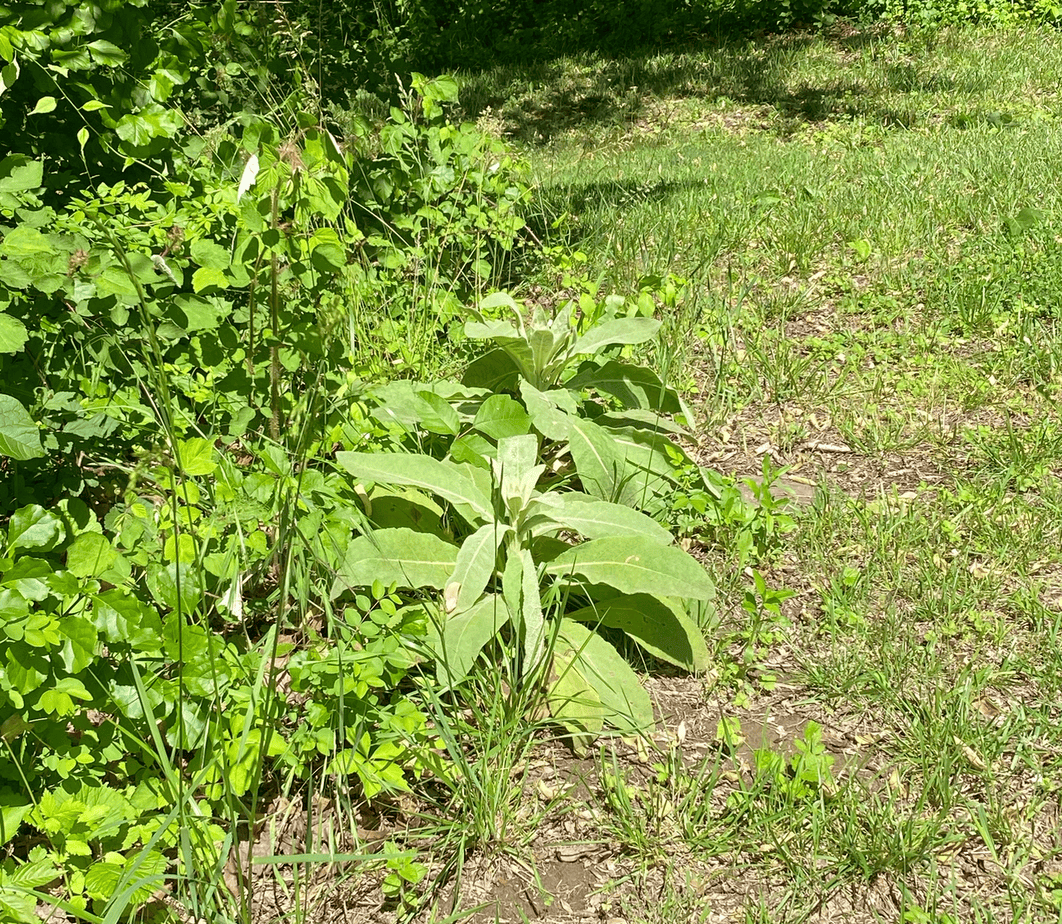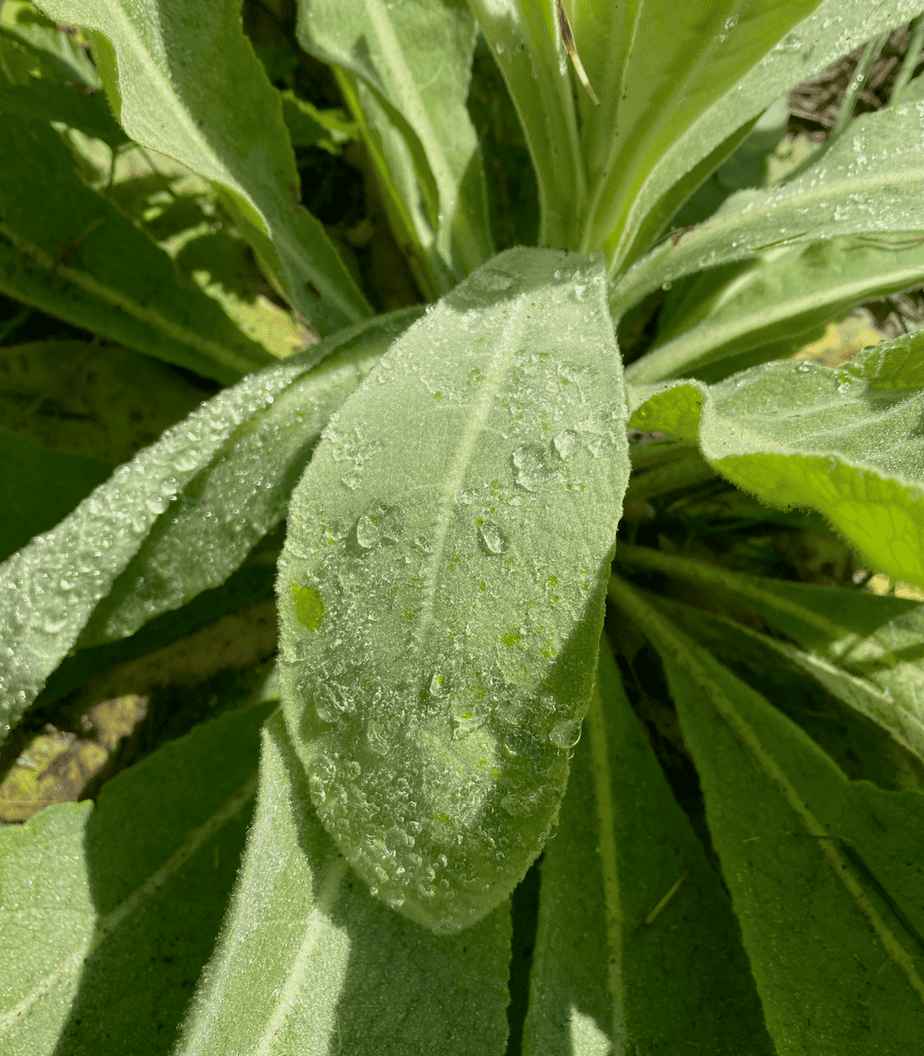Common mullein is not a weed. I thought that it probably was a weed. I see it growing along the edges of a hay field. This is a typical place to find it. Read on to learn more about this pretty plant that is not a weed, is actually a medicinal herb, and is not native to America.
Characteristics of Common Mullein
Common mullein is a biennial meaning that it grows for two years. The pictures that I have are of first year plants. These plants have large velvety looking leaves that extend from a central point. The leavers are shaped like a long oval, and they are a gray green color. The leaves grow concentrically from the center. They get smaller as they go from the base of the plant to the center. Common mullein leaves from something similar to a rosette. Leaves are up to 30cm in length or about 12 inches, depending on what source you get your information from. This means that a single plant could potentially cover an area almost 24” wide. That’s a big plant.
Second year plants produce tall spikes with spirals of five petaled flowers. These spikes grow from 5-10 feet tall. The flowers sit close to the spike, and they bloom continuously from June to September. The blooms open and close with daylight and dusk. Common mullein produces prolific amounts of seeds. By prolific I mean 100,00 to 180,00 seeds per plant. These seeds last for many, many years in soil. As a result, according to some sources, common mullein is considered invasive in some states.
Optimal Growing Conditions
Remember, common mullein isn’t just found in odd areas. Some people intentionally grow mullein. This plant has few requirements for optimal growing. First, it is intolerant of shade. Second, it requires at least 3 = 6” of rain per year. Really this is not much. Third, it likes a growing season of at least 140 days. This probably limits its growth in some higher elevations. Finally, it prefers well drained soils.
Medicinal Uses of Common Mullein
Of course, never eat anything you cannot 100% identify. Mullein is high in polysaccharides, gum, saponins, flavonoids, and indoid glycosides. These compounds are anti-inflammatory in nature.
Although mullein is a commonly used herb, however I had never heard of it! The purported health benefits are mostly based on in-vitro and animal studies. It may help with respiratory health, wound healing, urinary tract infections, earaches, and more. Of course, do your own research and consult with a doctor before ever taking any medicinal herb. They almost all have some kind of side effect.

